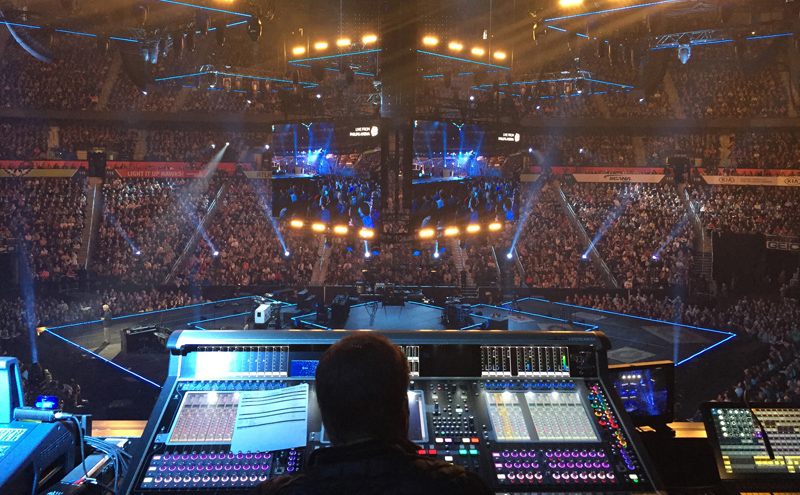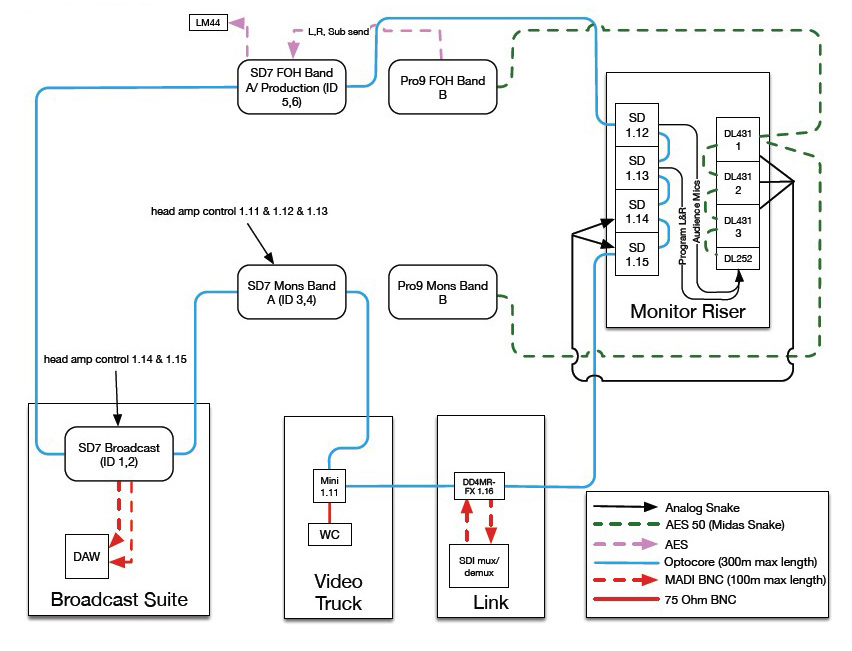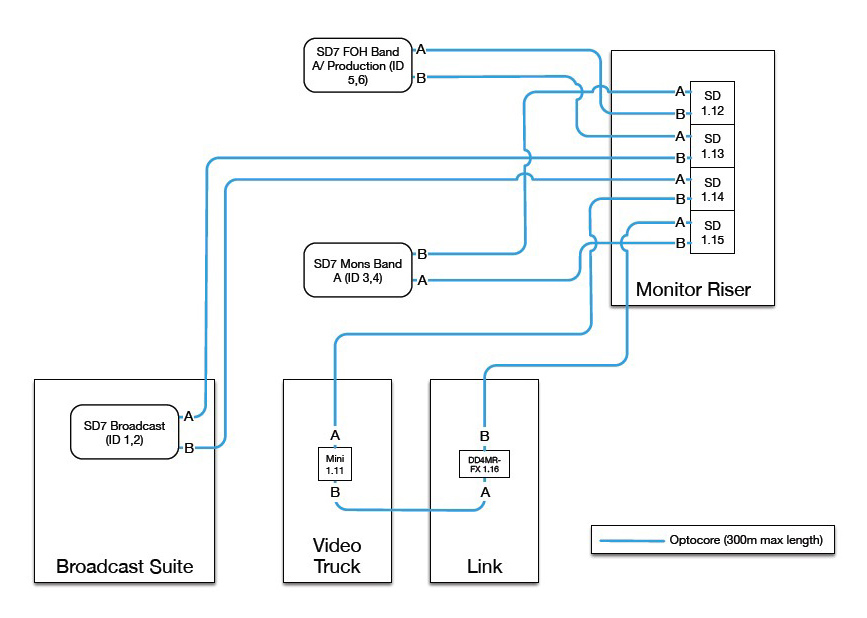
“We went from the SD-Racks, which lived in monitor world, out to front-of-house, then back to another SD-Rack,” Worley elaborates. “Then from the other side of the SD-Rack to broadcast and back into the other side of an SD-Rack. Monitors closed and opened the loop.”
The two PRO9 consoles at each venue interconnected with three DL431 I/O-splitter racks over AES50, and in turn were connected over an analog link into two dedicated DiGiCo SD-Racks.

“Both Midas consoles had head-amp control,” says Matt Manix of Method Production Group (Nashville), who was responsible for designing and coordinating the audio networks within and between the locations. “We didn’t do any gain tracking on the DiGiCo side. Two of the racks were fully controlled by monitors and everybody else had trim control. The SD7 broadcast engineers had head amp control over the two racks that took all the Midas inputs.”
Manix says of the SD7 package, “Having shared I/O and being able to have clean audio at every position without utilizing analog splitters, we were able to get the channel count up really high and retain the quality. It has to have one of the largest output bus counts out there and is arguably the most flexible system, as far as routing anything anywhere. And with the SD7’s A and B engine we didn’t have to rent extra desks or engines for redundancy.”
Philips Arena in Atlanta was the hub for the fiber link transmission, with satellite backup, between venues. “It was a hub and spoke, with Philips as the hub for all the HD-SDI transports,” Manix notes. “All of the video going between all three venues made its way through Philips, as did the audio. Philips could ‘talk’ to Toyota Center and Gwinnet independently, but there wasn’t fiber between the two. We never had to use the satellite backup because the fiber network was rock-solid.”
An HD-SDI stream with 16 embedded audio channels traveled over rented OC-192 lines between cities. Transmission speeds over the optical carrier are typically comparable to 10 Gigabit Ethernet.

The Optocore network extended out to each arena’s loading dock, where a DD4 fiber-to-MADI converter fed video-link world. Audio signal passed via a DiGiCo SD-Mini Rack located in the outside broadcast production truck supplied to each venue by TNDV of Nashville, which provided a complete camera package and handled video switching.
“They could pick up what they wanted from the broadcast or front of house engineers, and shoot that off via fiber to the other venues,” says Manix.
Using a Riedel MediorNet fiber-based real-time media transport network, link transmission operators were able to select which of the broadcast mixes from the three venues to webstream. “The link truck had access to all embedded audio from each venue at all times. Additionally, each DiGiCo desk at each venue had access to all embedded audio from all venues,” Manix explains. “There was a master clock from the OB truck, sent tri-level sync to MediorNet, which provided word clock to our audio network. Then it was re-clocked at every venue. It was perfect.”
Getting In Sync
The pastors emceeing at each venue were outfitted with DPA headset microphones with integrated earpieces, through which they received an IFB (interruptible foldback) feed.
